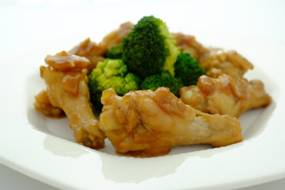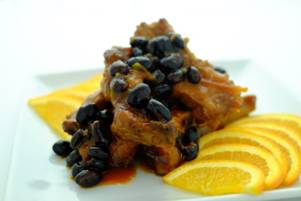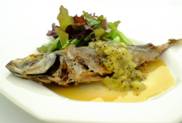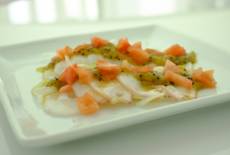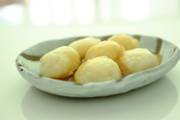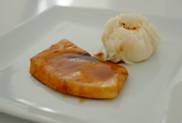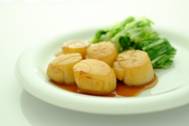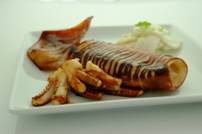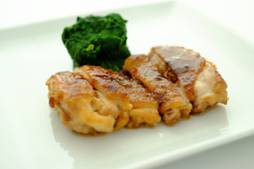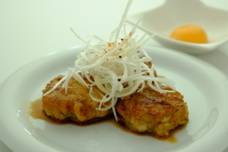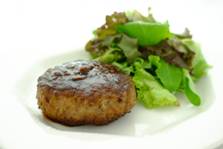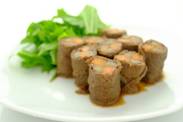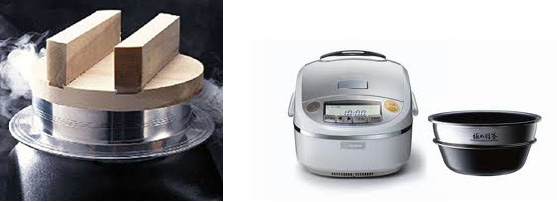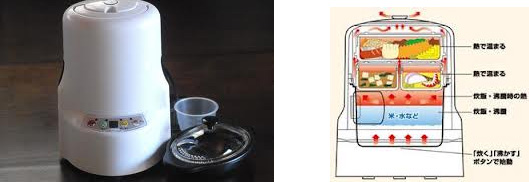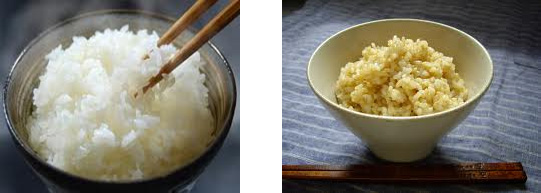Typical Japanese recipes which have a luster and the fragrant smell appealing to our appetite include spitchcocked eels and grilled chicken, yakitori. Specialized restaurants for those recipes usually have their own traditional sauce succeeded from generations. It is not too much to say the sauce has the most important effect upon its flavor.
The base of the sauce is a mixture of soy sauce and sugar, into which the fat of eels or chicken melt over the past years, creating their original flavor. Such sauce aged for years is the restaurant’s priceless property; therefore, it is believed that the sauce pot is the very first thing to carry out when fire or natural disaster occurs.
~ Spitchcock Eel ~
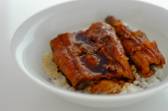
4 eels broiled without seasonings, 6 Tbs. soy sauce, 4 tbs. sugar, 2 tbs. mirin
DIRECTIONS:
1.Pour sugar and mirin in a pot. When boiled, add soy sauce. When boiled again, remove from the heat.
2.Place broiled eels in a frying pan and cook over low heat. Pour in 2 tablespoons of water and cook with a lid for about 5 minutes.
3.Pour the preserved seasoning ① in a pan and cook until it coats thoroughly around eels and glazed.
4.Place the glazed eels over a bowl of steamed rice. It makes tasty “Unadon.”
~ Pacific Saury Spitchcock-style ~
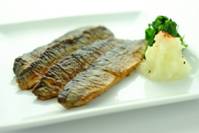
4 Pacific sauries, 4 tbs. plain flour, 4 tbs. oil, 2 tbs. soy sauce, 2 tbs. mirin, 1 tbs. sugar
Japanese white radish as needed, Green leafy vegetables as needed
1.Cut off the head of Pacific saury, remove the guts, and fillet. Quickly wash the fillets and dry well with paper towels.
2.Coat the fillets with flour lightly. Spread oil in a heated frying pan and stir-fry both sides until brown.
3.Blend soy sauce, mirin, and sugar well. Pour in the pan and cook until juice is gone.
4.Place on a plate and garnish with grated Japanese white radish and boiled green vegetables.
~BBQ ~
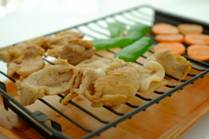
500g pork, 500g chicken,
Adequate amount of green pepper, onion, carrot, and other vegetables to your taste
3 tbs. soy sauce, 8 tbs. sake, 3 tbs. sugar, 3 tbs. sesame oil
1.Blend soy sauce, sake, sugar, and sesame oil well. Marinate meat with the seasonings.
2.Cut vegetables into bite-sized pieces.
3.Heat a grill well and cook meat and vegetables.
Barbeque in Okinawa
In Okinawa, the sub-tropical island surrounded around beautiful beaches, people love to barbeque as it’s called “beach party.” It is possibly true to say that local people go to beach for having barbeque rather than for swimming. Most commercial beaches are usually facilitated with rental barbeque equipment and you can also order barbeque set at the same time. Barbeque set (equipment and ingredients) is also available at many meat shops in town and they often have a delivery service to the designated beach.
 Starting from June when rainy season ends up to the early October is the barbeque season in Okinawa and beaches are full of people enjoying barbeque. Some people like to have barbeque at camping, parks (where approved only), or even at personal house garden. Having barbeque is not extraordinary activities among Okinawan people.
Starting from June when rainy season ends up to the early October is the barbeque season in Okinawa and beaches are full of people enjoying barbeque. Some people like to have barbeque at camping, parks (where approved only), or even at personal house garden. Having barbeque is not extraordinary activities among Okinawan people.
Considering the preparation of equipment and the amount of food, barbeque is usually set up as a big party for more than 10 guests. Generally, the average number of guests is 20 people. It is common for Okinawan people to have a barbeque at least once in a summer with family members, friends, co-workers, sports club team members, children’s friends, or as a class reunion. There may be some people who have beach parties every weekend during summer.
The beach party usually takes all-day. We usually start before noon and stay at the beach till the sun set. It is a very casual party so the guest will come and leave whenever they like. We would spend the day relaxed until the ingredients have all cooked and eaten. The barbeque set usually include different kinds of raw beef, pork, chicken, and sausage, yakisoba noodles, vegetables, and rice balls. They are already cut into appropriate size and ready to be cooked. Besides, each guest voluntarily brings one side dish, drink, desserts and snack, which make the party table quite rich.
Barbeque is such a fun leisure activity but one demerit is that the flavor can be monotonous. In order to avoid boredom, the best way is to have several kinds of sauce ready. In addition to the steak sauce or Yakiniku sauce from a store, please take great advantage of a variety of Teriyaki sauce introduced in this blog for a change. Teriyaki sauce will increase variations of party dishes for it makes good seafood entries.

